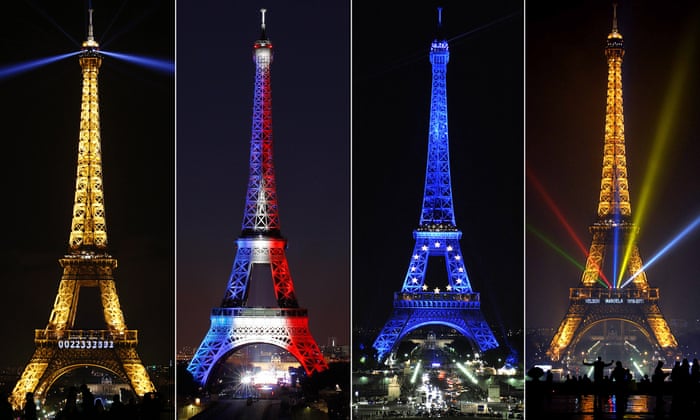#Introduction
Standing tall amidst the romantic city of Paris, the Eiffel Tower is not just an architectural masterpiece but an enduring symbol of love, art, and innovation. The mere mention of its name conjures images of Paris, the City of Light, and has made the Eiffel Tower an iconic landmark recognized worldwide. In this blog, we will delve into the history, engineering marvel, and cultural significance of the Eiffel Tower, a symbol of France and a testament to human ingenuity.
#A Tower Born of Ambition
The Eiffel Tower's story begins in the late 19th century when preparations for the 1889 Exposition Universelle (World's Fair) were underway in Paris. The French government sought an extraordinary centerpiece for the event that would showcase France's engineering prowess and artistic flair.
Gustave Eiffel, a renowned engineer, and his iron structure design were selected for the task. In 1887, construction began on what was initially known as "La Tour de 300 mètres" (The 300-Meter Tower). The tower, made of iron, was a daring venture at the time, as nothing of its scale and complexity had ever been attempted.
The construction process was a marvel in itself, with workers defying gravity as they built upwards. Over two years, 18,038 individual iron pieces were assembled using 2.5 million rivets. The Eiffel Tower, reaching a height of 324 meters (1,063 feet) upon its completion, became the tallest man-made structure in the world, a title it held for over 40 years.
#Engineering Feat
The Eiffel Tower's design is a testament to the genius of Gustave Eiffel and his team of engineers. The tower's structure is composed of a lattice of iron beams and girders, creating a remarkable interplay of light and shadow. This design not only makes the tower aesthetically captivating but also incredibly sturdy. In fact, its construction allowed it to withstand the forces of nature, including wind and weather.
The Eiffel Tower was a pioneer in the use of iron as a construction material, and its impact on the field of engineering and architecture cannot be overstated. Its design was influenced by the principles of tension and compression, which Eiffel used to create a structure capable of supporting its weight while minimizing the use of materials.
At the top of the tower is a flagpole that serves as an antenna, which was installed by Gustave Eiffel for meteorological and scientific research. This antenna would later become an essential component of the tower, as it was used to intercept enemy radio signals during World War I.
#Cultural Symbol
Over time, the Eiffel Tower transcended its role as a mere showcase of engineering expertise. It quickly became a symbol of France and an enduring emblem of the City of Paris. Its cultural significance is profound, and it has left an indelible mark on literature, art, and popular culture.
Countless authors, painters, and artists have drawn inspiration from the Eiffel Tower. In literature, it has featured in the works of writers like Emile Zola and Victor Hugo. Painters such as Georges Seurat and Robert Delaunay depicted the tower in their art, celebrating its unique structure and the play of light on its iron lattice.
The Eiffel Tower has also made its mark in cinema, becoming an iconic backdrop for countless films. In classics like "An American in Paris" and "The Last Tango in Paris," the tower's presence added a touch of enchantment and romanticism.
One cannot speak of the Eiffel Tower without mentioning its role as a symbol of love and romance. Millions of couples have sealed their love with a kiss under the tower's elegant arches. Its observation decks offer breathtaking panoramic views of the city, making it a popular destination for lovers and honeymooners.
#Conclusion
The Eiffel Tower stands as a testament to the power of human innovation, engineering, and artistic expression. It is not merely a landmark; it is a living piece of history, a cultural icon, and a symbol of love. The Eiffel Tower's grace and elegance have been enchanting visitors for over a century, and its importance extends beyond the world of architecture and engineering.
As you gaze upon the Eiffel Tower, you are not just witnessing an iron structure; you are experiencing a piece of the human spirit, a manifestation of artistic creativity and technical brilliance. The Eiffel Tower reminds us that, with vision and determination, we can achieve the extraordinary. It embodies the enduring magic of Paris, a city where dreams come true, and love is forever celebrated. In the heart of Paris, the Eiffel Tower stands tall, inviting us to appreciate the beauty of human achievement and the timeless allure of the City of Light.





Comments
Post a Comment